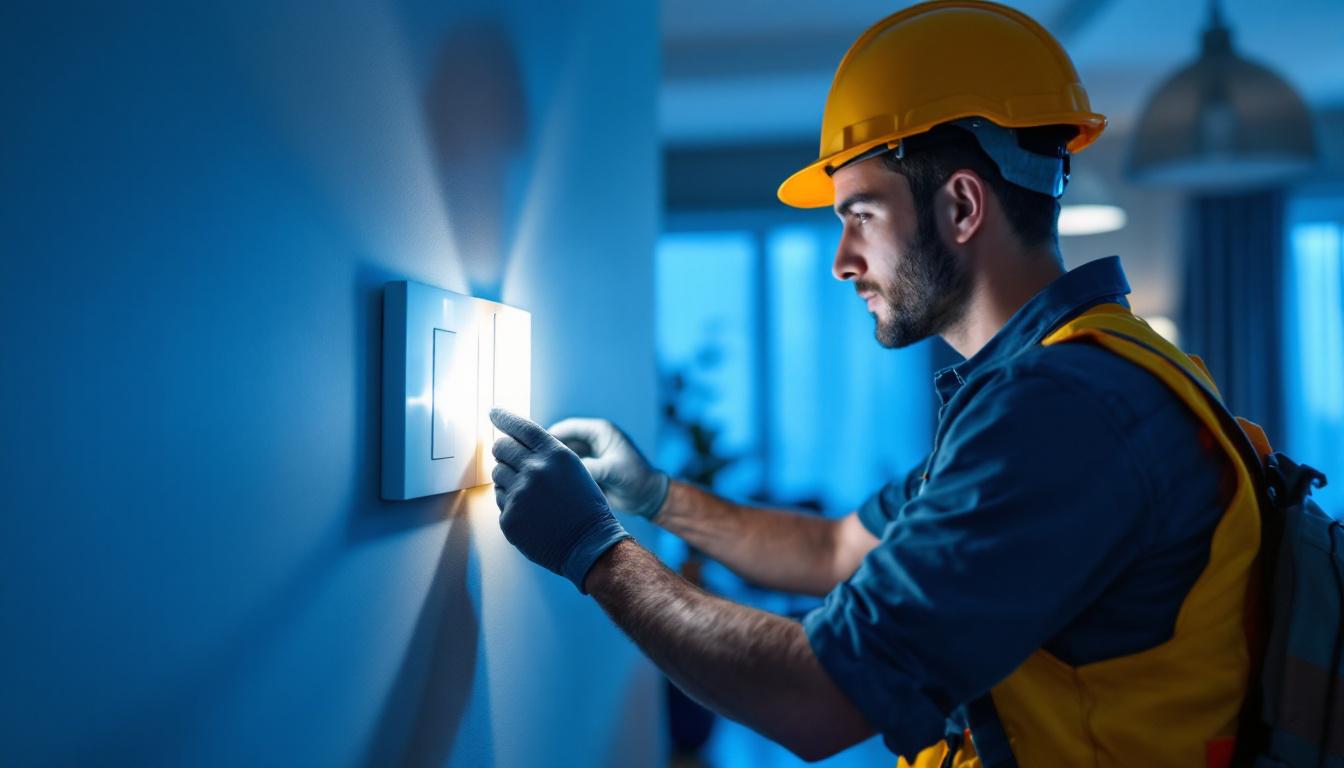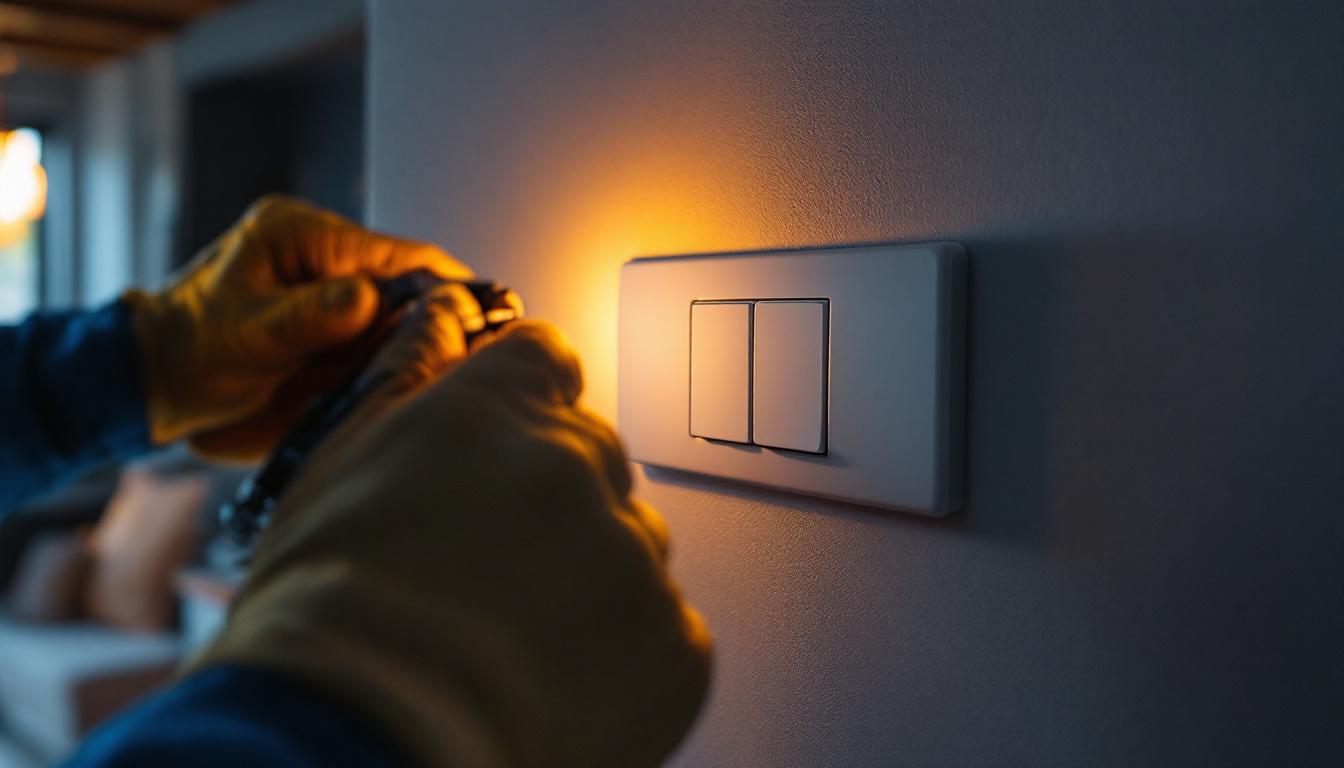
In the ever-evolving landscape of lighting technology, the introduction of innovative solutions like the light motion switch has transformed the way lighting contractors approach their projects. This device not only enhances energy efficiency but also simplifies installation and operation, making it a valuable tool in the contractor’s arsenal.
Light motion switches are designed to automatically turn lights on or off based on motion detection. This technology is particularly beneficial in commercial spaces, where lighting needs can vary significantly throughout the day. By incorporating these switches, contractors can provide their clients with a seamless and energy-efficient lighting solution. Additionally, these switches contribute to enhanced security by illuminating areas when movement is detected, deterring potential intruders and ensuring safety in dark or secluded spaces.
At the core of a light motion switch is a motion sensor that detects movement within a specified range. When motion is detected, the switch activates the connected lighting system. Conversely, if no motion is detected for a predetermined period, the lights will automatically turn off. This not only conserves energy but also extends the lifespan of the lighting fixtures. Furthermore, many modern light motion switches are equipped with advanced algorithms that minimize false triggers caused by pets or environmental factors, ensuring that the lights only activate when truly necessary.
There are primarily two types of motion sensors used in light motion switches: passive infrared (PIR) sensors and ultrasonic sensors. PIR sensors detect changes in infrared radiation, which is emitted by moving objects, while ultrasonic sensors emit sound waves and measure their reflection to detect motion. Each type has its own advantages and is suited for different applications. For instance, PIR sensors are often preferred for outdoor lighting due to their ability to cover larger areas, while ultrasonic sensors are more effective in enclosed spaces where they can detect subtle movements, making them ideal for hallways and restrooms.
Light motion switches come equipped with various features that enhance their functionality. Adjustable sensitivity settings allow contractors to tailor the sensor’s responsiveness to the specific environment, while time delay settings enable customization of how long the lights remain on after motion ceases. Some models even offer manual override options, providing users with flexibility in lighting control. In addition to these features, many light motion switches now include smart technology integration, allowing users to connect them to home automation systems. This means that users can control their lighting remotely via smartphone apps, schedule lighting patterns, and even receive notifications when motion is detected, adding an extra layer of convenience and security to their lighting solutions.
Integrating light motion switches into lighting designs offers numerous advantages for contractors. These benefits extend beyond mere convenience, impacting project efficiency, client satisfaction, and overall energy management.
One of the most significant benefits of light motion switches is their ability to enhance energy efficiency. By ensuring that lights are only on when needed, contractors can help clients reduce their energy consumption and lower utility bills. This not only supports sustainability initiatives but also appeals to environmentally conscious customers. Furthermore, the integration of smart technology allows for real-time monitoring of energy usage, enabling clients to make informed decisions about their lighting needs and adjust settings accordingly. This proactive approach to energy management can lead to even greater savings and a more sustainable operation overall.
While there may be an initial investment associated with installing light motion switches, the long-term savings often outweigh these costs. Reduced energy bills and decreased wear and tear on lighting fixtures translate to lower maintenance costs and longer replacement cycles. For contractors, this presents an opportunity to offer clients a cost-effective solution that pays off over time. Additionally, many local and federal programs provide incentives for energy-efficient upgrades, which can further offset installation costs and make the transition to motion-activated lighting even more appealing for clients. This financial aspect can be a compelling selling point for contractors looking to differentiate their services in a competitive market.
In addition to energy savings, light motion switches enhance safety and security in various settings. For instance, in commercial spaces, well-lit areas deter potential intruders and create a safer environment for employees and customers. By ensuring that lights automatically turn on in response to movement, contractors can contribute to a safer atmosphere without requiring manual intervention. Moreover, in residential settings, these switches can provide peace of mind for homeowners, especially during nighttime hours when visibility is reduced. The convenience of having lights activate automatically when someone approaches can also be a significant selling point for families with children or elderly members, ensuring that everyone can navigate their environment safely and confidently.
While light motion switches offer numerous benefits, proper installation is crucial to maximize their effectiveness. Lighting contractors must consider various factors to ensure optimal performance and client satisfaction.
The placement of motion sensors is critical in determining their effectiveness. Contractors should assess the layout of the space and identify high-traffic areas where motion detection will be most beneficial. Additionally, avoiding obstacles that may block the sensor’s line of sight is essential for reliable operation. For instance, placing sensors too close to walls or large furniture can hinder their ability to detect movement accurately. Furthermore, considering the height at which the sensors are mounted can also influence their performance; typically, a height of 6 to 8 feet is recommended for optimal detection range.
Before installation, contractors must ensure that the existing wiring is compatible with the light motion switch. Understanding the electrical requirements and ensuring that the switch can handle the load of the connected lighting fixtures is vital. This not only ensures safety but also guarantees optimal performance. In some cases, upgrading the wiring may be necessary to accommodate newer, more energy-efficient lighting options. Additionally, contractors should be aware of the different types of motion sensors available, such as passive infrared (PIR) and dual technology sensors, as each type has specific wiring and installation requirements that must be considered.
Once installed, thorough testing and calibration of the motion sensors are necessary. Adjusting sensitivity settings and time delays based on the specific environment will help prevent false triggers and ensure that the lights operate as intended. This step is crucial in delivering a high-quality installation that meets client expectations. Moreover, contractors should conduct a series of tests at different times of the day and under varying conditions to ensure the sensors respond appropriately to both natural and artificial light changes. Regular maintenance checks and recalibration may also be recommended to keep the system functioning optimally over time, especially in areas with fluctuating temperatures or heavy foot traffic.
Despite the advantages, lighting contractors may encounter challenges when working with light motion switches. Understanding these potential issues and having solutions at hand can streamline the installation process and enhance client satisfaction.
One common challenge is the occurrence of false triggers, where lights activate without any actual motion. This can be caused by environmental factors such as drafts, pets, or even passing vehicles. To mitigate this issue, contractors can adjust the sensitivity settings of the sensors or reposition them to minimize exposure to these triggers.
Another challenge is the limited detection range of certain motion sensors. In larger spaces, a single sensor may not cover the entire area effectively. Contractors can address this by strategically placing multiple sensors to ensure comprehensive coverage, thereby enhancing the overall effectiveness of the lighting system.
Educating clients on the functionality and benefits of light motion switches is essential for successful implementation. Many clients may be unfamiliar with this technology and its advantages. Providing clear explanations and demonstrations can help alleviate concerns and encourage clients to embrace this innovative solution.
The lighting industry is continuously evolving, and light motion switches are just one example of how technology is shaping the future. As smart home and building automation systems become more prevalent, the integration of motion sensors with other technologies will likely become standard practice.
As smart technology continues to advance, the integration of light motion switches with smart home systems presents exciting possibilities. Contractors can offer clients solutions that allow for remote control and monitoring of lighting systems through smartphones or tablets. This level of control enhances convenience and further promotes energy efficiency.
Future developments in sensor technology may lead to even more sophisticated motion detection capabilities. Innovations such as machine learning algorithms could enable sensors to differentiate between types of movement, reducing false triggers and improving overall performance. Contractors who stay informed about these advancements will be better positioned to offer cutting-edge solutions to their clients.
As the focus on sustainability intensifies, the demand for energy-efficient lighting solutions will continue to grow. Light motion switches, with their ability to reduce energy consumption, align perfectly with these initiatives. Contractors who prioritize sustainable practices will not only meet client expectations but also contribute to a greener future.
In summary, light motion switches represent a significant advancement in lighting technology that simplifies the work of lighting contractors while enhancing energy efficiency and safety. By understanding how these devices work, their benefits, and the challenges associated with their installation, contractors can provide clients with innovative solutions that meet their evolving needs.
As the industry continues to evolve, staying informed about emerging trends and technologies will be crucial for contractors looking to remain competitive. Embracing solutions like light motion switches not only enhances project outcomes but also positions contractors as leaders in the lighting industry.
Ultimately, the integration of light motion switches into lighting designs is a step toward a more efficient, cost-effective, and sustainable future for both contractors and clients alike.
Ready to elevate your lighting projects with the latest in light motion switch technology? Look no further than LumenWholesale, where we provide lighting contractors with superior, spec-grade lighting products at the most competitive wholesale prices. Say goodbye to local distributor markups and hello to our extensive selection that meets the highest industry standards. With LumenWholesale, you can count on reliable, high-performance lighting solutions for every project. Plus, with free shipping on bulk orders, you can stock up on premium lighting without worrying about hidden fees or compromises. Don’t miss out on the perfect blend of quality, affordability, and convenience. Take action now and discover the best value in Wholesale Lighting at the Best Value with LumenWholesale.

Discover how to enhance your lighting setup with 4-foot fluorescent light bulbs.

Discover essential strategies for lighting contractors to effectively price their services.

Discover the crucial role of outside lamp posts in modern lighting projects.

Discover expert tips on mastering three rocker switches for lighting contractors.